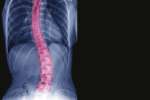Lumbago is a general term referring to back pain. It may be just another word, but when you’re suffering from back pain, it’s anything but trivial. You don’t have to live in constant pain. There are answers to your lumbago, and treatment is available.
Diagnosing Lumbago
Lumbago is a symptom, not a disease itself, so diagnosis involves trying to pinpoint the source of the pain or the actual problem area. Two factors play a role in diagnosis: type and area. Type refers to the identification of how the pain feels, what makes it better or worse, and when and how frequently it occurs. Area refers to the distribution of the pain—where it is felt. These questions can usually be answered through a physical examination and information given by the patient. In an examination, your doctor will look for difficulty moving joints in the spine, hips, and pelvis and may do orthopedic or muscle tests to check for nerve damage in the spine. In most cases, a treatment plan does not require an exact diagnosis of the source of pain, but in some instances an X-ray or MRI can be used to confirm a diagnosis or check for more serious problems like fractures, herniated discs, or compression of nerves.
Types of Lumbago
There are different types of lumbago, and understanding which one you suffer from will help determine treatment. The first and most-common type is axial lumbago. Axial pain is confined to the lower back and does not radiate to other parts of the body. It is often described as pain that gets worse with certain activities or positions and typically lessens with rest. Causes of axial lumbago include degenerated discs, joint problems, and damage to soft tissue. The other two types of lumbago—referred pain and radicular pain—have some similarities, the main one being that they both distribute pain to other parts of the body. Referred pain tends to be felt mostly in the buttocks, groin area, and upper thigh. It can move around and vary in intensity. Referred is the result of injury to an area of the back, pelvis, or thigh where the pain is “referred” to another part of the body, so it can be more difficult to diagnose since the brain can’t identify the source of the pain. In radicular lumbago, the pain most often radiates down the back part of the leg or along the sciatic nerve (known as sciatica). Radicular pain is caused by the compression or inflammation of a spinal nerve and is often felt most in the leg even though the source is the lower back. Causes of radicular lumbago include arthritis, scar tissue from previous surgeries, diabetes, and nerve root injuries.
Treatment of Lumbago
Lumbago can be classified as acute or chronic depending on the length of the pain, with acute lasting less than six weeks and chronic lasting longer than three months. Whether acute or chronic, a first step in treatment is typically a pain reliever. Over-the-counter anti-inflammatory medications like ibuprofen or acetaminophen may be enough to relieve many people’s pain. Your doctor may choose to prescribe a stronger medication depending on the severity of pain. From there, a physical therapy regimen and exercise routine, and/or chiropractic care may be recommended. Some patients may benefit from spinal injections as well. In cases of extreme muscle weakness or pain, or when nonsurgical options fail, surgery may be necessary.
The doctors at NS2 are uniquely qualified to assess lumbago and determine the best course of action, from medication to physical therapy to potential surgery. If you are suffering from back or leg pain, make an appointment online today.






